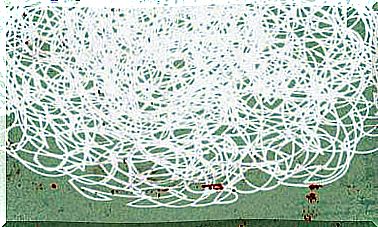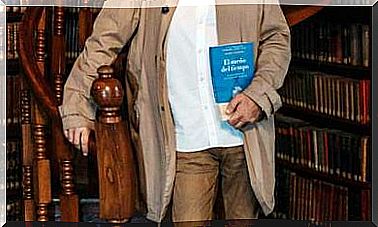Join Brain And Heart. Who Makes The Decisions?
We thought that the brain is the conductor of our organism, but there is more and more evidence that it is the heart that makes the decisions.

The mind does not function separately from the body, and in the same way our brain does not function independently of our heart. Both organs sing a symphony that influences our perceptions and decisions, and the way we connect with others.
It is something that begins to be analyzed by deep biology and that takes us to a new perception of who we really are.
Brain and heart: the co-directors of our organism
We love, we study, we laugh, we get frustrated and we make decisions convinced that each of these acts are controlled by the brain.
However, the underlying emotions behind these experiences often have the heart as a co-conductor as well.
With its heartbeat language, the heart not only sends messages to the brain, when its neurons detect that we need to balance, but it also activates its own resources to return to equilibrium, and it can even do so autonomously, without our brain intervenes.
Between both organs a round trip is established in which our perceptions are designed without our being fully conscious, but from where we experience our being as much as the emotions and sensations of others.
The cardiac brain
The heart keeps us connected with neurons that learn, feel, remember and make functional decisions without the full consent of the brain, since its electromagnetic field is 5,000 times stronger than that of the brain.
According to scientific research, its energy extends up to four meters around our body, so feeling isolated from others is an illusion of the mind.
And it is that the brain controls and takes care of our survival, attentive to the adaptation to the environment and what happens inside us, but the heart performs actions that affect our perceptions.
The heart is a “cardiac brain”, as Dr. J. Andrew Armor called it in 1991, because with its intrinsic nervous system, located around the surface of the right ventricle, and endowed with 40,000 neurons, neurotransmitters, proteins and cells of support, can act as the brain.
The body-mind unit
We can improve the experience of the body-mind unity, natural in Eastern culture, because it is not a static unity.
The great Japanese philosopher Yuasa Yasuo introduced the concept of “achieved body-mind unity” and proposed continuous psychophysical training as a way of conscious access to that unity, based on a better connection with the senses and with the mental states of relaxation and perception. of totality.
The feeling of unity is not uncommonly accompanied by a deep sense of inner strength. The experience of the “state of unity”, of the unity that is born from within, and which is part of the experience of being – just being, without barriers or judgment – activates attitudes such as forgiveness or reconciliation.
It is the state of “inner peace” or “being in the center” which, in a broad sense of the term, is a mystical experience. The experience is greater when the heart transfers physiological, psychological and social information between individuals, because from an evolutionary point of view it is this connection that has allowed us to get here as a species.
Says John Cacioppo, creator of social neuroscience : “Humans grow, learn and develop in groups, and science has shown that we have emotions that do not exist in other species, or that they do, but are barely developed. One is the empathy, a form of mutual receptivity in which others influence and shape our state of mind and our biology. “
Being in the shoes of others
We are truly in the shoes of others because, according to Daniel Stern, associate professor in the department of Psychiatry at Cornell University, “our nervous system perceives the nervous system of others and feels what others feel.” When that happens we resonate with their experience and they resonate with us.
In fact, Aristotle already gave priority to the heart over the brain, and in the Middle Ages it was believed that each person had three souls: one in the liver, another in the heart and the third was the rational soul.
But it has taken more than eleven centuries for us to know that human beings are provided with the resources to set in motion and maintain the inner unity and care of the species.
The altruism, emotional reading, the ability to predict others ‘ actions, instantly perceiving the inner state of other person or understand their feelings and thoughts … are other capabilities within our reach.
Our mind is permeable and interconnected with other minds, linked by an invisible thread.
We only need to re-educate ourselves to have a more open and receptive attitude, ready to learn, because we maintain an unconscious dialogue all the time with all the people with whom we interact, in a kind of interpersonal matrix.
The Sufism gives us a wonderful education in this sense: that of the mystics Kamal Posh, the “manta holders”, which was his only possession.
It tells the following: these mystics traveled all over the world in Muhammad’s time without anyone ever satisfying them internally. The Prophet was sitting with his companions when he predicted that the group of Kamal Posh would arrive not too late.
And so it happened. When they sat down next to him, he did not speak, and yet the Kamal Posh were completely satisfied. They were silent, the mind was not chattering. He had created love in their hearts, and it was such a powerful emotion that they felt permeated.
There was no complaint, because the complaint only appears when the heart is not grateful, and the act of thanking goes hand in hand with silence.
The greater the physical harmony between two people, the greater the similarity between their moods. When the mood is positive, then the internal connection with other people brings great benefits to those who perceive it, both for the mind and for the body.
And it is that not only the brain waves of one person can synchronize with the heart of another, they can also do it by speeding up or slowing down before the good or bad news, as the heart receives that information just before the brain does.
The connection between a mother and her baby
In the love relationship between a mother and her baby, the mother seeks synchronization by imitating the sounds and gestures of the child and creates a much more harmonious bond and great communication.
Perhaps this is why you are beginning to think that most mothers cradle their baby on the left side, because while keeping the little right ear of the little one close to their chest they can speak to the left ear, which is closer and stimulates the right side. of your brain.
In this way, a direct emotional connection is promoted and the moment of synchronicity is reached more quickly.
The wonderful thing is that, in that mother-child unit that is established, the synchronicity between the two regulates the baby’s internal balance and increases the possibility of synaptic connections, without counting on the fact that the baby is learning to tune in emotionally long before knowing how to speak.
Understand our mind through that of others
In Carl G. Jung’s work Man and His Symbols it is said that, although the Innu of Quebec and Labrador (Canada), also called the “perfect people”, experience the inner center without the help of any doctrine, the Navajo Indians they regain inner balance through painted mandalas.
With them they return to harmony both personally and with the Cosmos, and thus give true meaning to their lives.
The stillness that is experienced when perceiving the inner state is reflected in Sanskrit in two words: samadhi , which means mindfulness, and vipassana , which is usually translated by lucidity, clairvoyance, wisdom.
Both words refer to calming the ups and downs of the agitated mind and therefore observing the world without the mirages that often hide reality from us.
The yoga helps achieve a greater sense of unity by the stillness of the mind and “just being” that can be achieved more quickly if the asanas or postures of this discipline, acting the same time on the body and mind , are practiced as slowly as possible in order to affect the glandular secretions of the endocrine system. With slow, directed breathing, this dramatically improves mood.
In Narciso and Golmundo , Herman Hesse represents with brilliant narrative the union of opposites.
With incredible literary neatness, he turns the mind and body into a sort of antithetical characters that at times are confused with the same image of loneliness when they are separated, to bifurcate again in an inner search alone, left to their own resources, although a and again they have no escape and are needed again.
In this learning novel, this intimate bildungsroman weaves contradictory feelings that reflect the human need to find shortcuts to inner unity.
“You are an artist and I am a thinker. You sleep on your mother’s lap and I watch in the desert …”, Narciso says to Golmundo, thus contrasting the rational with the irrational, the intellect with the imagination, the real with the ideal. the concrete to the abstract, but without ceasing to be both part of the same totality that is unified and flourishes the greater the acceptance that unity is the only thing that can overcome the fear of opening our hearts.
Fear is the only thing that can prevent the light that illuminates the paths that lead us from being removed and with it the wonder of understanding our mind while understanding that of others








